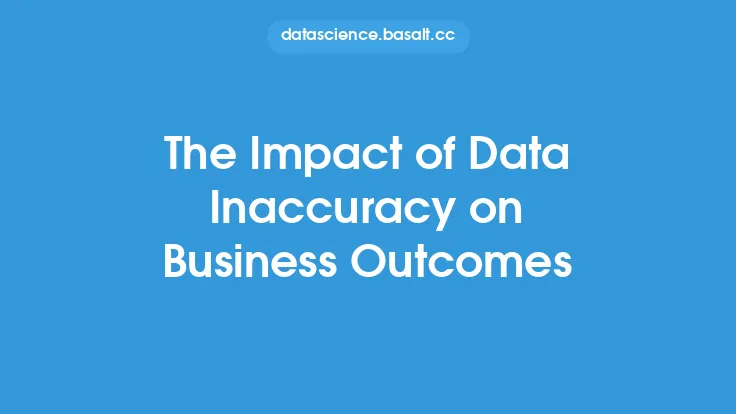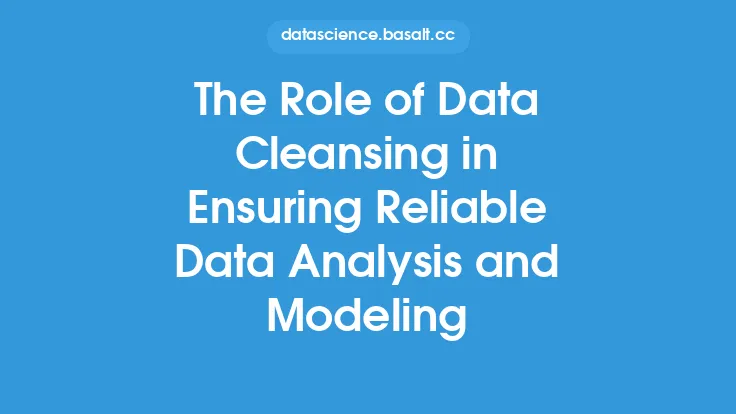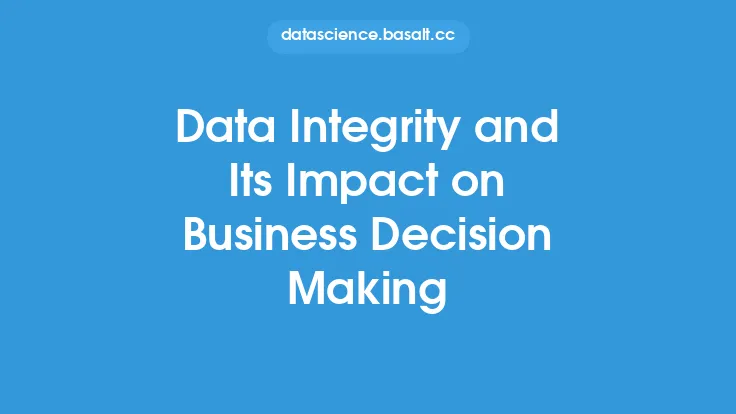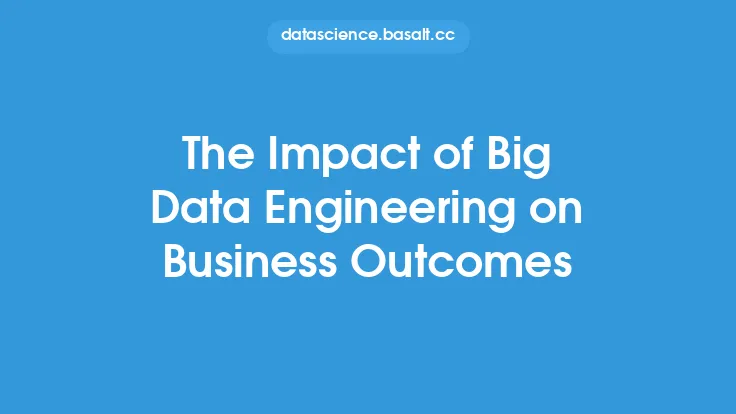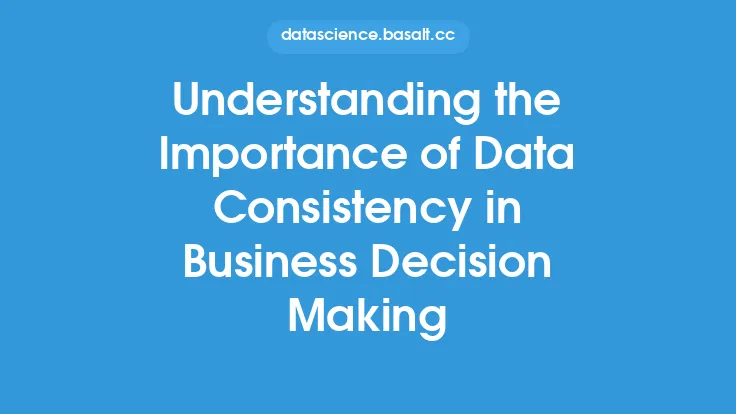Poor data quality is a pervasive issue that affects businesses across various industries, leading to suboptimal decision-making, inefficient operations, and ultimately, negative impacts on the bottom line. The consequences of poor data quality can be far-reaching, influencing everything from customer relationships and supply chain management to financial performance and regulatory compliance. In this context, data cleansing emerges as a critical process that can help mitigate the effects of poor data quality, ensuring that business outcomes are optimized and data-driven decisions are informed.
Introduction to Data Quality Issues
Data quality issues can arise from various sources, including human error, system glitches, and integration problems. When data is inaccurate, incomplete, or inconsistent, it can lead to a range of problems, such as incorrect reporting, flawed analysis, and misguided decision-making. For instance, duplicate or erroneous customer data can result in wasted marketing resources, while inaccurate inventory data can lead to stockouts or overstocking. Furthermore, poor data quality can also compromise data security, as sensitive information may be exposed or vulnerable to cyber threats.
The Consequences of Poor Data Quality
The consequences of poor data quality can be severe and long-lasting. According to a study, poor data quality costs businesses an average of 15% to 25% of their revenue. This can be attributed to various factors, including wasted resources, missed opportunities, and damaged customer relationships. Moreover, poor data quality can also lead to compliance issues, as regulatory bodies increasingly expect businesses to maintain high standards of data accuracy and security. In extreme cases, poor data quality can even lead to business failure, as companies struggle to recover from the reputational damage and financial losses caused by data-related errors.
The Role of Data Cleansing in Improving Data Quality
Data cleansing is the process of identifying, correcting, and transforming inaccurate, incomplete, or inconsistent data into a more accurate, complete, and consistent form. By removing errors, duplicates, and inconsistencies, data cleansing can significantly improve data quality, enabling businesses to make informed decisions and optimize their operations. Data cleansing involves a range of techniques, including data profiling, data validation, and data transformation, which can be applied to various types of data, from customer information to financial transactions.
Data Cleansing Techniques and Tools
There are various data cleansing techniques and tools available, each with its strengths and weaknesses. Data profiling, for instance, involves analyzing data to identify patterns, trends, and anomalies, while data validation involves checking data against predefined rules and constraints. Data transformation, on the other hand, involves converting data from one format to another, such as aggregating data or converting data types. Some common data cleansing tools include data quality software, data integration platforms, and data governance solutions. These tools can help automate data cleansing tasks, improve data accuracy, and reduce the risk of human error.
Benefits of Data Cleansing
The benefits of data cleansing are numerous and well-documented. By improving data quality, businesses can gain a competitive edge, enhance customer relationships, and optimize their operations. Data cleansing can also help reduce costs, improve efficiency, and increase revenue. Moreover, data cleansing can enable businesses to make better decisions, as accurate and reliable data provides a solid foundation for analysis and modeling. Some of the key benefits of data cleansing include improved data accuracy, reduced data redundancy, and enhanced data security.
Best Practices for Data Cleansing
To get the most out of data cleansing, businesses should follow best practices that ensure data quality is maintained throughout the data lifecycle. This includes establishing data governance policies, defining data quality standards, and implementing data validation rules. Businesses should also invest in data cleansing tools and technologies, such as data quality software and data integration platforms. Additionally, businesses should prioritize data cleansing, recognizing its importance in driving business outcomes and informing data-driven decisions.
Challenges and Limitations of Data Cleansing
While data cleansing is a critical process, it is not without its challenges and limitations. One of the main challenges is the sheer volume of data that needs to be cleansed, which can be time-consuming and resource-intensive. Additionally, data cleansing requires significant expertise and resources, which can be a barrier for small and medium-sized businesses. Moreover, data cleansing is an ongoing process, as data is constantly changing and evolving. This means that businesses need to continually monitor and update their data to ensure it remains accurate and reliable.
Future of Data Cleansing
The future of data cleansing is closely tied to the evolution of data quality and the increasing importance of data-driven decision-making. As businesses continue to generate and collect vast amounts of data, the need for effective data cleansing solutions will only grow. Emerging technologies, such as artificial intelligence and machine learning, are likely to play a significant role in data cleansing, enabling businesses to automate data cleansing tasks and improve data accuracy. Moreover, the rise of cloud computing and big data analytics will require new and innovative data cleansing approaches, as businesses seek to extract insights from large and complex data sets.
Conclusion
Poor data quality is a significant issue that can have far-reaching consequences for businesses, from suboptimal decision-making to negative impacts on the bottom line. Data cleansing emerges as a critical process that can help mitigate the effects of poor data quality, ensuring that business outcomes are optimized and data-driven decisions are informed. By understanding the consequences of poor data quality, the role of data cleansing, and the benefits and challenges of data cleansing, businesses can take proactive steps to improve data quality and drive business success. As the importance of data quality continues to grow, businesses that prioritize data cleansing will be well-positioned to thrive in a data-driven world.

